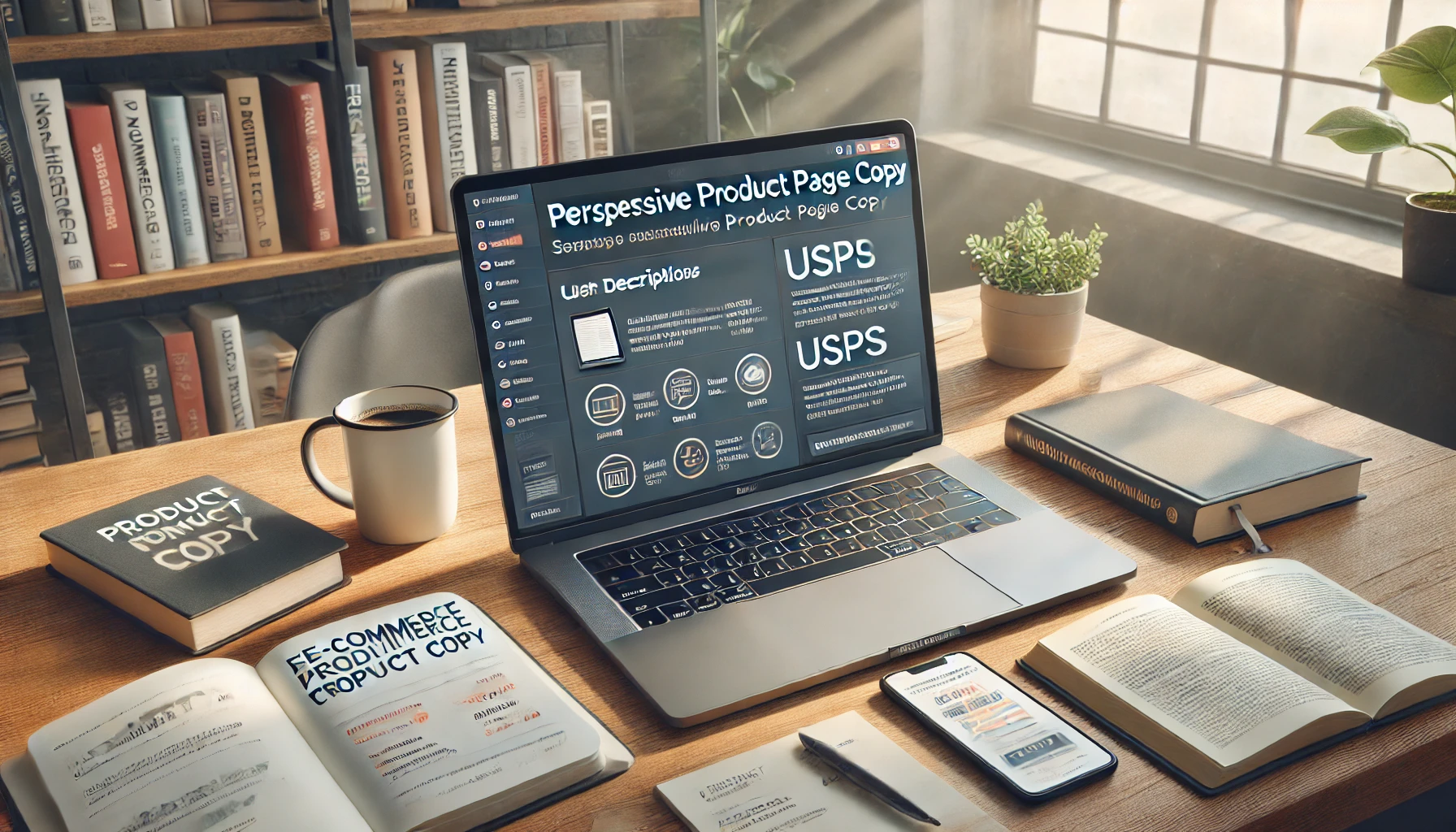In the world of e-commerce, your product pages are often the first point of contact between your brand and potential customers. The goal of product page copy is to not only describe the product but to persuade the visitor to make a purchase. Writing persuasive product page copy requires you to communicate the value of the product, highlight its key features and benefits, and guide the customer toward completing the transaction. In this beginner’s guide, we’ll cover the essential elements of writing compelling product page copy that converts.
1. Understand the Product and Its Audience
The first step in writing persuasive product page copy is to fully understand the product and its target audience. You need to know what makes the product stand out and how it meets the needs of the customers you are trying to attract.
Here’s how to gain a deep understanding:
- Learn the product’s features: Get familiar with every aspect of the product, from its materials and dimensions to its unique selling points.
- Identify the target audience: Understand who will be using the product. Is it a luxury item for high-end consumers, or an affordable solution for budget-conscious shoppers?
- Highlight the benefits: Think about how the product improves the customer’s life. Is it more efficient, more durable, or more enjoyable than competitors’ options?
The more you know about the product and its audience, the better you can tailor your messaging to highlight its value and drive conversions.
2. Craft a Compelling Headline
The headline is the first thing customers see on the product page, and it needs to grab their attention immediately. A great headline clearly communicates what the product is and its primary benefit in a few short words.
Here’s how to write an effective product headline:
- Be clear and specific: Don’t leave room for ambiguity. For example, “High-Speed Blender for Smoothies and Soups” is much clearer than “Powerful Kitchen Blender.”
- Focus on the benefit: Highlight the main benefit the customer will experience, such as “Save Time with Our Fast-Charging Wireless Earbuds.”
- Use powerful, action-oriented words: Words like “boost,” “transform,” or “unlock” convey action and urgency, which can motivate customers to learn more.
A compelling headline will make the customer want to read more and continue exploring the product page.
3. Write Engaging and Clear Product Descriptions
Your product description is where you elaborate on the key features and benefits of the product. It should give the customer all the information they need to make an informed purchase decision while also persuading them to take action.
Here’s how to write effective product descriptions:
- Focus on benefits: As mentioned, focus on how the product will solve the customer’s problem or improve their life. Instead of just listing features, explain why those features matter.
- Be clear and concise: Avoid long-winded explanations. Keep the product description short, clear, and to the point.
- Use bullet points for key features: Bullet points make it easy for customers to quickly scan the important details, such as size, color, material, and functionality.
- Include storytelling: If applicable, tell a story about how the product was created, or share customer success stories or reviews that illustrate how the product has helped others.
A well-crafted product description provides value to the customer and helps them see why your product is the right choice for their needs.
4. Highlight the Product’s Unique Selling Points (USPs)
Every product has something that sets it apart from the competition. Whether it’s a unique feature, exceptional quality, or unbeatable price, you need to communicate the product’s unique selling points (USPs) clearly.
Here’s how to highlight USPs:
- Identify what makes the product stand out: Is it more durable, more versatile, or more affordable than similar products? Focus on those USPs to make the product more attractive.
- Be specific: Provide clear examples or evidence that support your USPs. For example, “Made with stainless steel for long-lasting durability” or “Free shipping on orders over $50.”
- Appeal to emotions: If the product helps the customer feel a certain way (e.g., more confident, more comfortable), be sure to mention it. For example, “Feel stylish and comfortable all day with our premium leather jacket.”
Clearly showcasing the USPs increases the product’s appeal and helps persuade customers to buy.
5. Use Clear Calls to Action (CTAs)
Your product page should always include a strong call to action (CTA) that guides customers toward making a purchase. Without a CTA, customers may not know what to do next, and you risk losing the sale.
Here’s how to write an effective CTA:
- Be specific: Use clear action verbs like “Add to Cart,” “Buy Now,” or “Shop Today” to tell the customer exactly what to do.
- Create urgency: Phrases like “Limited time only” or “Only a few left in stock” encourage immediate action.
- Make it prominent: Ensure your CTA stands out visually by using contrasting colors, bold fonts, or buttons that are easy to spot.
A strong CTA encourages the customer to take immediate action, increasing the likelihood of a conversion.
6. Incorporate Social Proof
Social proof is one of the most powerful tools in persuasive writing. If potential customers see that others have had positive experiences with your product, they’ll be more likely to make a purchase themselves.
Here’s how to use social proof:
- Include customer reviews and ratings: Positive reviews and high ratings help establish trust and provide real-world evidence of the product’s effectiveness.
- Show testimonials: Include quotes or success stories from satisfied customers to help build credibility.
- Use trust badges: Display certifications, guarantees, or trusted third-party logos (like payment options or return policies) to reassure customers.
Social proof builds trust and can significantly increase conversions.
7. Optimize for SEO
To ensure that your product pages are discoverable by search engines, you need to optimize the copy for SEO. This increases the chances that your product pages will appear in search results when potential customers are looking for similar products.
Here’s how to optimize product pages for SEO:
- Use relevant keywords: Include keywords that potential customers are searching for in the product title, description, and meta tags.
- Write unique descriptions: Avoid using manufacturer-provided descriptions that might appear on multiple websites. Write original, engaging copy that differentiates your product.
- Optimize images: Include high-quality images with alt text that describes the product. This helps with both SEO and user experience.
SEO optimization ensures that your product page ranks well on search engines and drives organic traffic.
Conclusion: Write Product Pages That Convert
Writing persuasive product page copy is an essential skill for any e-commerce business. By understanding the product and its audience, crafting compelling headlines, focusing on benefits, and using clear CTAs, you can create product pages that drive conversions.
By continuously optimizing your product descriptions, highlighting the USPs, and incorporating social proof, you can ensure your product pages effectively convince customers to make a purchase. With these tips, you’ll be well on your way to writing product pages that convert.

